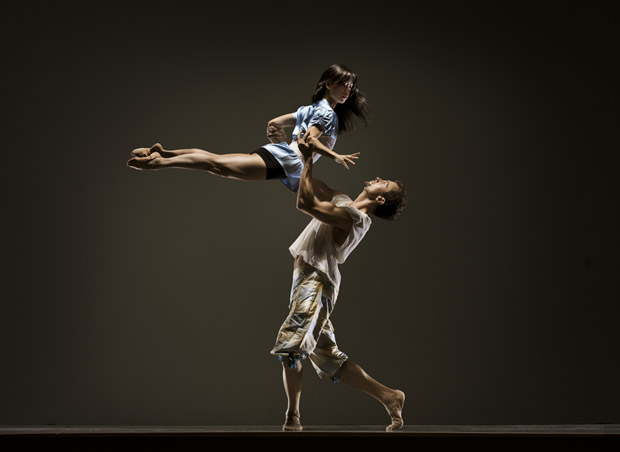
Robert Moses’ KIN Dance Company
The Soft Sweet Smell of Firm Warm Things, Speaking Ill of the Dead, Biography, Scrubbing the Dog, Helen
San Francisco, Novellus Theater
30 March 2012
Helen, What Happens After You Fall, The Vessel Stories, Scrubbing the Dog, Radiance & Polarity
San Francisco, ODC Theater
7 June 2012
www.robertmoseskin.org
Robert Moses’ KIN is unique among the modern companies in San Francisco. He has several traits that set him apart; the most important is that he has a strong personal choreographic voice and he has developed a company of dancers who are capable of making it heard clearly. This is particularly relevant because he frequently creates dances with strong socio-political themes. Because of his ability to blend both content and interpretation by the performers, his work is far from being agit-prop and is deeply moving.
Of the five pieces he presented in March for his spring season, The Soft Sweet Smell of Firm Warm Things (2001) won an Isadora Duncan Award for Choreography. Speaking Ill of the Dead (2006) is a hard-hitting anti-war work with an evocative soundtrack created by Moses and David Worm. Even more unusual is the sound for Biography (2003) which is excerpts from a discussion with three black writers, James Baldwin, Lorraine Hansberry and Langston Hughes and the white literary critics and writers Emile Capouya and Alfred Kazin while they clarify what it means to be a black writer. I saw both these dances when they premiered and feel fortunate to see them again. Scrubbing the Dog is still a work in progress so I will refrain from discussing it until the finished product makes its debut, but it looks very promising.
Closing the evening the company presented the premiere of Helen which appeared again on the June program. Moses’s choreography is so intelligently layered and complex, so devilishly mercurial, so distinctly personal that when it’s over you want to see it again to catch anything you might have missed and savor the dancers’ mind-boggling execution. Few choreographers are so adept at orchestrating the momentum throughout the entire piece. His is not the vaudeville format where one act follows another with pauses in-between. Instead, while one dance is happening, another is slowly developing on the other side of the stage, much as in life where many events are occurring simultaneously. Moses constantly challenges the audience to see and feel more, almost dares it to keep up with his quick shifts in movement texture and mood and also to pause in the midst of the churning action to find the deeper meanings.

It should come as no surprise that Moses himself was a phenomenal performer, technically and emotionally. I often wondered how he managed not to kill or maim himself as he landed after launching himself through the air in galvanising pretzel contortions. He could change his focus so rapidly that he made tennis spectators look lethargic. All these qualities inform his dancemaking. Watching his movement vocabulary is like listening to a foreign language you’ve never heard before and yet viscerally you feel you understand perfectly. Clearly Moses is the antidote for all that generic modern dance we see too often.
The second concert in June brings together a group of choreographers courtesy of the BY Series which was conceived in order that audiences could experience this company in new ways. The program opens with Moses’s own Helen, and the second time around it is definitely performed with more focus, both inward and outward, and group cohesiveness, and sets the bar very high for the rest of the evening.
Next is the premiere of What Happens After You Fall, choreographed by Ramon Ramos Alayo, a former member of RMK, set to music by Fall on Your Sword. A trio of men, Brendan Barthel, Dexandro Montalvo and Victor Talledos, reveals two very different sides, one very powerfully athletic and the other caring tenderness. The beginning is marked by an indelible image as the three men move down a diagonal partnering each other in the movement phrase with one man almost supine being held by the back of the neck by another’s flexed foot. Alayo, born and trained in Cuba, definitely has his own voice, at times inflected by martial arts and at others by an undulating sensuality. In the final section Talledos gingerly climbs to a standing position on Barthel’s shoulders, not in the bravura manner of acrobats, but with growing courage and trust.
Molissa Fenley’s triptych, The Vessel Stories, set to String Quartet #4 by Philip Glass, is the only piece not created for these dancers as it was originally made on Fenley’s own company. I wonder what would have happened if she had had the opportunity to develop a work employing the enormous talents of these four women – Crystaldawn Bell, Norma Fong, Josie Garthwaite Sadan and Katherine Wells, or if she would have chosen other dancers. After the two preceding works, it is an anticlimax. Once you know what these dancers are capable of and then you see them so underutilized, it seems a sacrilege. In another context these three dances, Faces of the Moon, 100 Vessels and Alcove of Treasures would be all right. Here they seem very old-fashioned, almost like an academic lecture demo of mid-20th century modern dance, with its simple leaps, triplets, steps with the front leg in attitude. Alas, not even a contracted torso or dramatic drop to the floor á la Graham to break up the mostly upright and lyrical movements.

In Radiance & Polarity choreographer Sidra Bell shows she knows precisely how to use the four women who danced in Fenley’s piece and gives them their chance to prove just how versatile they are. Whether executing a solo or working in unison these dancers are riveting.
Although this company has used other choreographers in the past seventeen years (nine in total, four for a solo concert for Moses and five for the entire company) the BY Series is a real commitment toward expanding horizons of the dancers in Robert Moses’ KIN. In a world where choreographers with their own eponymous companies prevail, I am happy to see that Moses sees the value of feeding his dancers a diverse diet of artistic experiences, definitely a situation where everyone wins, audience included.
Robert Moses’ KIN Dance Company continues with the BY Series June 14-17, Thursday through Saturday 8 pm and Sunday at 2 pm at ODC Theater, Shotwell and 17th Streets, San Francisco.










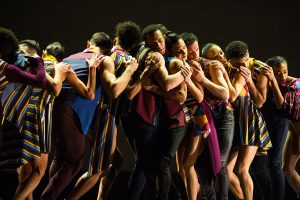

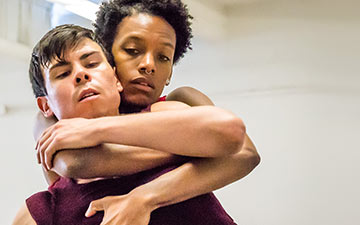
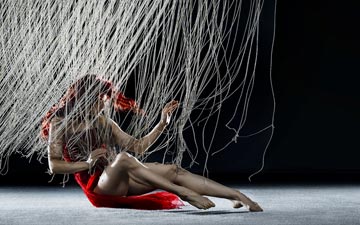

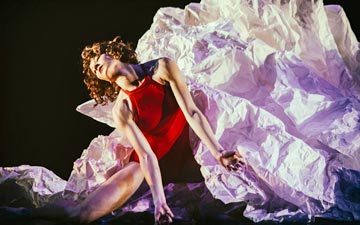

You must be logged in to post a comment.